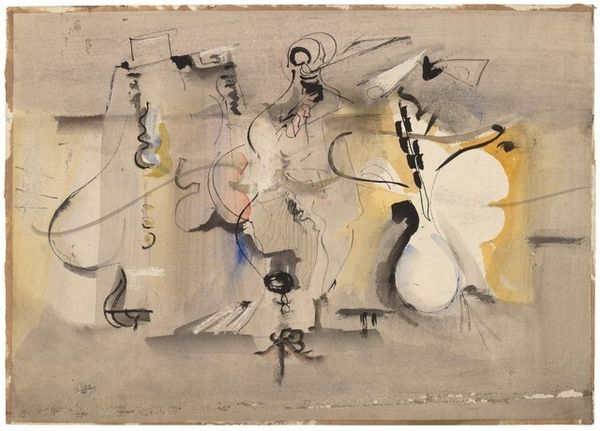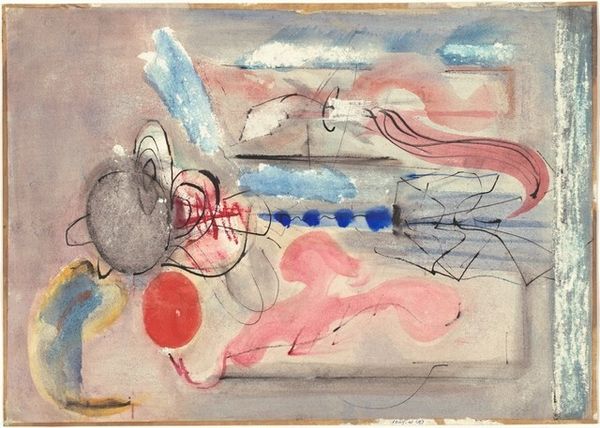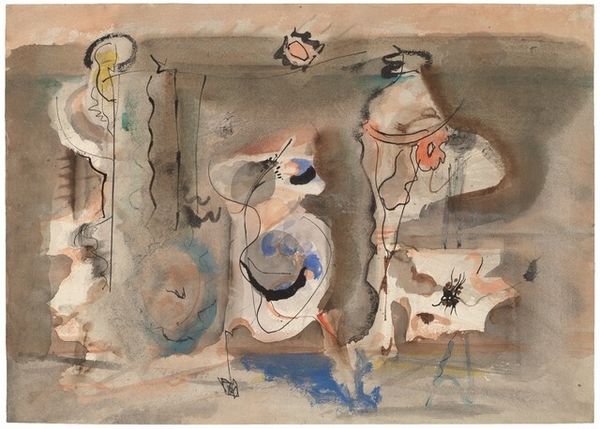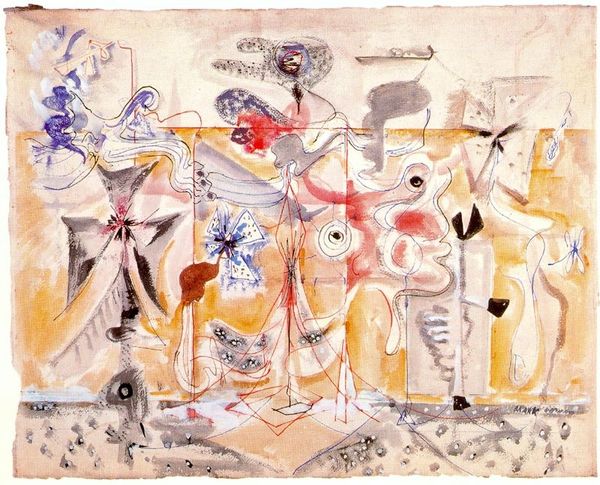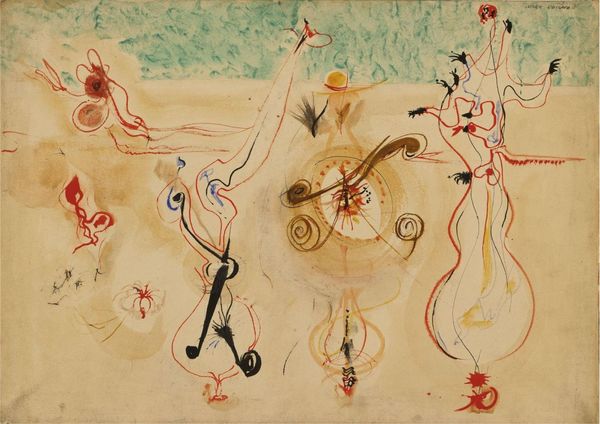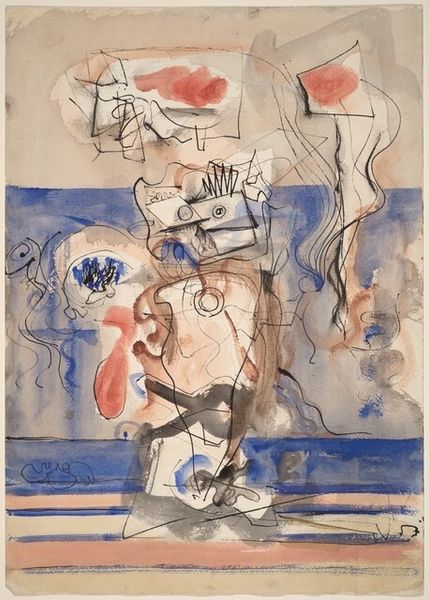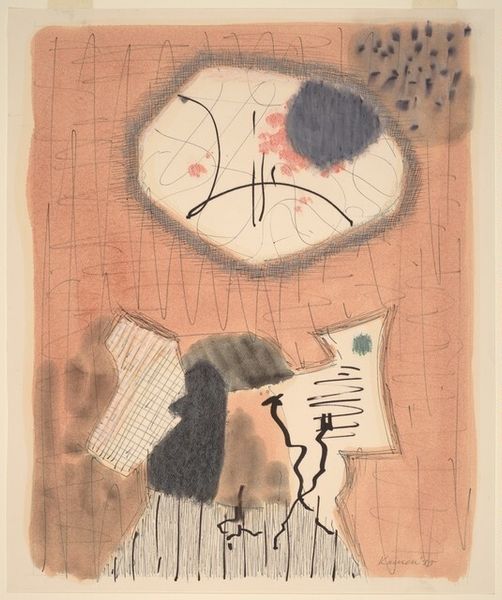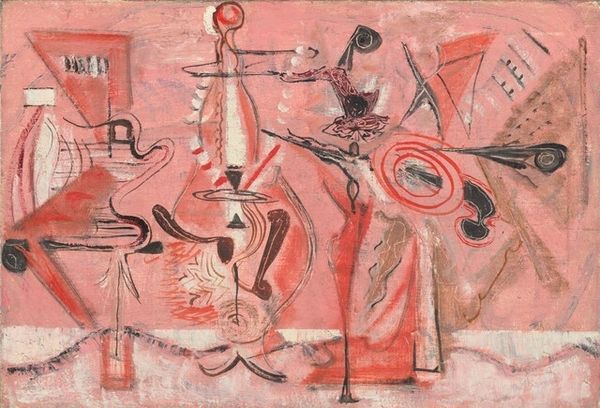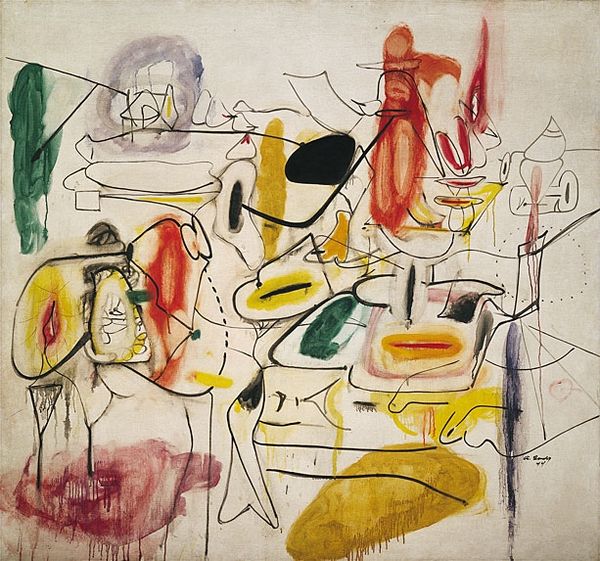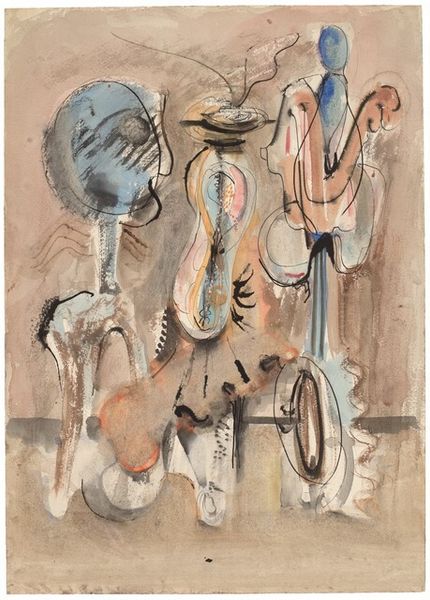![Abstract Composition in Black, Gray, Pink, Orange, Blue, and Tan [recto] by Mark Rothko](/_next/image?url=https%3A%2F%2Fd2w8kbdekdi1gv.cloudfront.net%2FeyJidWNrZXQiOiAiYXJ0ZXJhLWltYWdlcy1idWNrZXQiLCAia2V5IjogImFydHdvcmtzLzNmNmMwOTBmLWExMTYtNDVlYy1iYmI4LWYyNWE2ZTE1ZGFlOC8zZjZjMDkwZi1hMTE2LTQ1ZWMtYmJiOC1mMjVhNmUxNWRhZThfZnVsbC5qcGciLCAiZWRpdHMiOiB7InJlc2l6ZSI6IHsid2lkdGgiOiAxOTIwLCAiaGVpZ2h0IjogMTkyMCwgImZpdCI6ICJpbnNpZGUifX19&w=1920&q=75)
Abstract Composition in Black, Gray, Pink, Orange, Blue, and Tan [recto] c. 1944
0:00
0:00
drawing, paper, watercolor
#
abstract-expressionism
#
drawing
#
water colours
#
paper
#
watercolor
#
coloured pencil
#
geometric
#
abstraction
Dimensions: overall: 38.9 x 57.5 cm (15 5/16 x 22 5/8 in.)
Copyright: National Gallery of Art: CC0 1.0
Editor: This is Mark Rothko’s “Abstract Composition in Black, Gray, Pink, Orange, Blue, and Tan” from around 1944, done with watercolor and colored pencil on paper. The shapes feel very biomorphic, almost like figures emerging from a dream. What do you see in this piece, particularly considering its historical context? Curator: Given the socio-political landscape of the 1940s, particularly the looming shadow of World War II, I see an expression of fractured reality, typical of its time. This isn’t straightforward representation; it's an abstraction reflecting a world in turmoil, trying to find new visual language in the face of immense disruption. What do you make of his colour palette at the time? Editor: It's quite muted, isn't it? Almost hesitant compared to the later colour field paintings he's famous for. Curator: Exactly! Think about how art institutions in the '40s were hesitant to embrace such radical shifts. Rothko was pushing against those boundaries, trying to express interiority at a time when exterior forces were so dominant. His choice of a more subdued palette might also reflect the anxieties and uncertainties of that period, but were these self imposed or gallery requirements, do you think? Editor: That's a great point; there must have been institutional pressure. So, the rawness and hesitancy almost become a statement of resistance? Curator: Precisely. And, we also consider that abstraction itself became a form of silent protest during eras where direct political expression was stifled. Art became a terrain for symbolic battles. This seemingly quiet composition shouts volumes when placed within that context. Editor: That really shifts my understanding of this piece. I was focusing on the personal and emotional aspects, but the socio-political dimension adds a whole new layer. Curator: Indeed, art doesn’t exist in a vacuum. The dialogue between the artist, the work, and the prevailing cultural and institutional environment is crucial to understanding its depth and meaning.
Comments
No comments
Be the first to comment and join the conversation on the ultimate creative platform.
